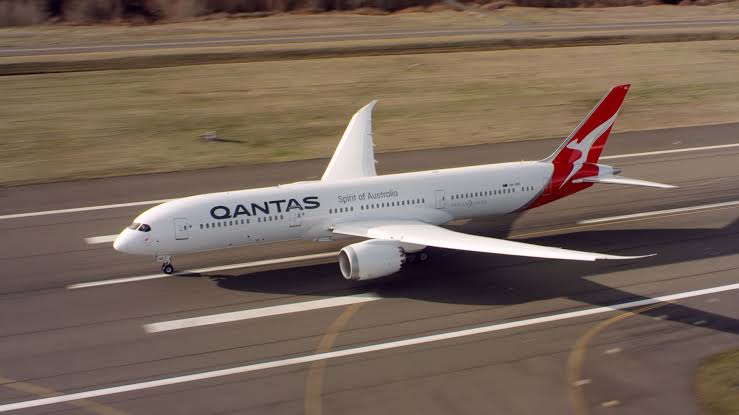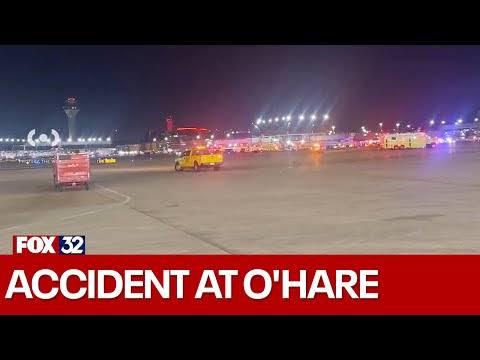Qantas Airways Flight Disrupted After Pilot Faint Mid Flight
Qantas Airways Flight Disrupted After Pilot Faints Mid-Flight
In a rare and alarming incident, a Qantas Airways flight from Perth to Melbourne experienced a mid-air emergency after one of its pilots lost consciousness, prompting an urgent diversion and raising fresh concerns about pilot health and emergency preparedness in commercial aviation. The plane landed safely, with no injuries reported, thanks to the swift response of the flight crew and ground control.
The Incident
Qantas Flight QF752, a Boeing 737-800 aircraft carrying 156 passengers and six crew members, departed Perth Airport at approximately 9:35 a.m. local time on Sunday, April 28. The flight was expected to arrive in Melbourne just over three hours later. Roughly 90 minutes into the journey, as the aircraft cruised at 37,000 feet over South Australia, the captain reportedly fainted inside the cockpit.
The first officer, who was co-piloting the flight, noticed the captain’s sudden loss of consciousness and immediately assumed control of the aircraft. According to internal Qantas communications reviewed by Australian aviation media, the co-pilot followed emergency protocol by alerting air traffic control and requesting an unscheduled landing at Adelaide Airport, the nearest suitable location.
Emergency Protocol in Action
The situation was managed professionally and efficiently by the co-pilot, who remained calm under pressure. The flight was swiftly diverted to Adelaide, and a priority landing was granted by airport authorities. Emergency medical personnel were placed on standby, and the plane touched down without incident at 11:18 a.m.
Upon landing, paramedics boarded the aircraft and provided immediate medical assistance to the unconscious captain, who regained consciousness on the tarmac and was transported to a local hospital for further evaluation. His current condition has been described as stable, though the cause of the fainting episode has not yet been confirmed.
The passengers, though shaken, were unharmed and remained seated during the descent. The flight was grounded in Adelaide for several hours while Qantas arranged for a replacement crew and conducted standard safety inspections before continuing the journey to Melbourne later in the evening.
Passenger Accounts
Several passengers recounted their experiences during the emergency, describing a moment of confusion followed by calm and professionalism from the flight crew.
“I noticed we were descending rapidly and assumed it was due to turbulence,” said Michelle Hart, a passenger seated near the wing. “Then the announcement came that we were diverting for a medical emergency involving one of the pilots. It was scary, but the crew stayed composed and reassured us throughout.”
Another traveler, James Lin, praised the handling of the incident. “It could have gone very differently. But thanks to the co-pilot and crew, we landed safely. Everyone deserves praise,” he said.
Qantas Statement
Qantas confirmed the incident in a brief official statement on Sunday afternoon:
> “One of our flight crew members on QF752 from Perth to Melbourne experienced a medical issue mid-flight. In accordance with safety protocols, the flight was diverted to Adelaide where it landed safely. We commend our crew for their quick and professional response. The affected pilot is receiving medical care and is in stable condition.”
The airline also stated that all passengers were offered food vouchers and the option to rebook or wait for a connecting flight. Hotel accommodations were provided for those facing long delays.
Regulatory Investigation Underway
Australia’s Civil Aviation Safety Authority (CASA) has launched a formal inquiry into the incident, as is standard procedure following in-flight medical emergencies involving flight crew. The agency is expected to review the pilot’s medical history, certifications, and pre-flight clearance.
CASA spokesperson Lauren Jacobs noted that while such incidents are rare, they underscore the importance of rigorous health screenings and multi-pilot systems on commercial flights.
> “The co-pilot’s response illustrates why airline regulations require two certified pilots on every commercial flight. While this situation was handled well, CASA will conduct a full review to ensure all safety protocols were followed,” Jacobs said.
A Reminder of Pilots’ Physical Demands
This incident is the second in recent months involving a commercial airline pilot fainting mid-flight, with a similar event reported on a Southwest Airlines flight in the United States just weeks earlier. Though no passengers were harmed in either case, aviation experts say these incidents serve as reminders of the intense physical and mental demands placed on pilots.
Pilots in Australia are subject to medical evaluations either annually or bi-annually, depending on their age and type of license. However, unions have long expressed concerns that the current health screenings may not be sufficient to detect underlying issues that could emerge during flight operations.
Former Qantas pilot and aviation consultant John Mackenzie said the aviation industry must take pilot health as seriously as technical maintenance.
> “Aircraft undergo thorough mechanical checks before every flight. The same level of care should apply to the people flying them. Fatigue, stress, and underlying medical conditions are real risks that need constant monitoring,” Mackenzie explained.
Crew Training Lauded
Despite the scare, industry bodies and passengers have praised Qantas and the flight crew for their handling of the situation. The co-pilot’s quick thinking and calm response under pressure are being hailed as a textbook example of aviation professionalism.
“Aviation safety depends on layers of training, coordination, and readiness,” said Claire Foster, a spokesperson for the International Federation of Air Line Pilots’ Associations. “This incident highlights the importance of regular simulator training for emergencies, including incapacitation scenarios. We applaud the crew for their outstanding response.”
Looking Ahead
The unnamed captain is currently under medical supervision, and Qantas has assured the public that he will not return to duty until a full medical clearance is obtained. The airline is also cooperating with CASA’s investigation and is conducting its own internal review.
As the aviation sector continues to rebound from the disruptions caused by the COVID-19 pandemic, such incidents place renewed focus on the health, workload, and welfare of flight crews around the world.
Although pilot incapacitations are extremely rare—with fewer than 1 in 30,000 flights experiencing such events—airlines and regulators are likely to face increasing pressure to enhance screening measures and support services for flight crew members.
Conclusion
The successful handling of Qantas Flight QF752’s in-air emergency is a powerful reminder of the resilience and training of commercial airline crews. While the incident was undoubtedly distressing for passengers and staff alike, the professionalism shown ensured a safe outcome for all involved.
With investigations ongoing and the pilot recovering, attention now turns to what lessons might be drawn to improve safety protocols and support systems for pilots in the future. For the passengers onboard, however, the safe landing in Adelaide was all the proof they needed that they were in capable hands—even in the most unexpected of circumstances.






